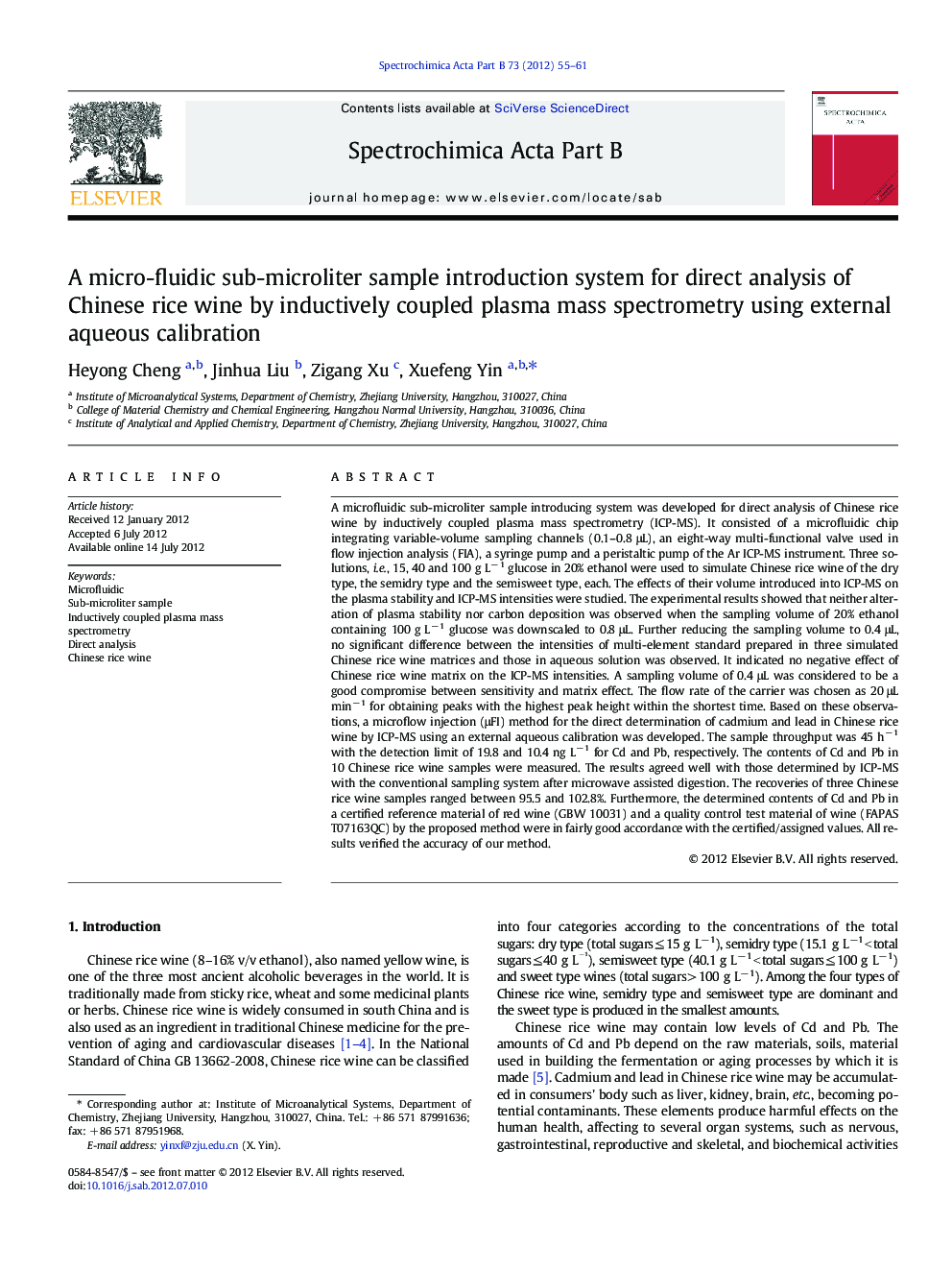| Article ID | Journal | Published Year | Pages | File Type |
|---|---|---|---|---|
| 1240043 | Spectrochimica Acta Part B: Atomic Spectroscopy | 2012 | 7 Pages |
A microfluidic sub-microliter sample introducing system was developed for direct analysis of Chinese rice wine by inductively coupled plasma mass spectrometry (ICP-MS). It consisted of a microfluidic chip integrating variable-volume sampling channels (0.1–0.8 μL), an eight-way multi-functional valve used in flow injection analysis (FIA), a syringe pump and a peristaltic pump of the Ar ICP-MS instrument. Three solutions, i.e., 15, 40 and 100 g L− 1 glucose in 20% ethanol were used to simulate Chinese rice wine of the dry type, the semidry type and the semisweet type, each. The effects of their volume introduced into ICP-MS on the plasma stability and ICP-MS intensities were studied. The experimental results showed that neither alteration of plasma stability nor carbon deposition was observed when the sampling volume of 20% ethanol containing 100 g L− 1 glucose was downscaled to 0.8 μL. Further reducing the sampling volume to 0.4 μL, no significant difference between the intensities of multi-element standard prepared in three simulated Chinese rice wine matrices and those in aqueous solution was observed. It indicated no negative effect of Chinese rice wine matrix on the ICP-MS intensities. A sampling volume of 0.4 μL was considered to be a good compromise between sensitivity and matrix effect. The flow rate of the carrier was chosen as 20 μL min− 1 for obtaining peaks with the highest peak height within the shortest time. Based on these observations, a microflow injection (μFI) method for the direct determination of cadmium and lead in Chinese rice wine by ICP-MS using an external aqueous calibration was developed. The sample throughput was 45 h− 1 with the detection limit of 19.8 and 10.4 ng L− 1 for Cd and Pb, respectively. The contents of Cd and Pb in 10 Chinese rice wine samples were measured. The results agreed well with those determined by ICP-MS with the conventional sampling system after microwave assisted digestion. The recoveries of three Chinese rice wine samples ranged between 95.5 and 102.8%. Furthermore, the determined contents of Cd and Pb in a certified reference material of red wine (GBW 10031) and a quality control test material of wine (FAPAS T07163QC) by the proposed method were in fairly good accordance with the certified/assigned values. All results verified the accuracy of our method.
► A microfluidic sub-microliter sample introduction system was developed for ICP-MS. ► Direct analysis of Chinese rice wine by ICP-MS was achieved. ► No carbon deposit or matrix effect from Chinese rice wine was observed.
